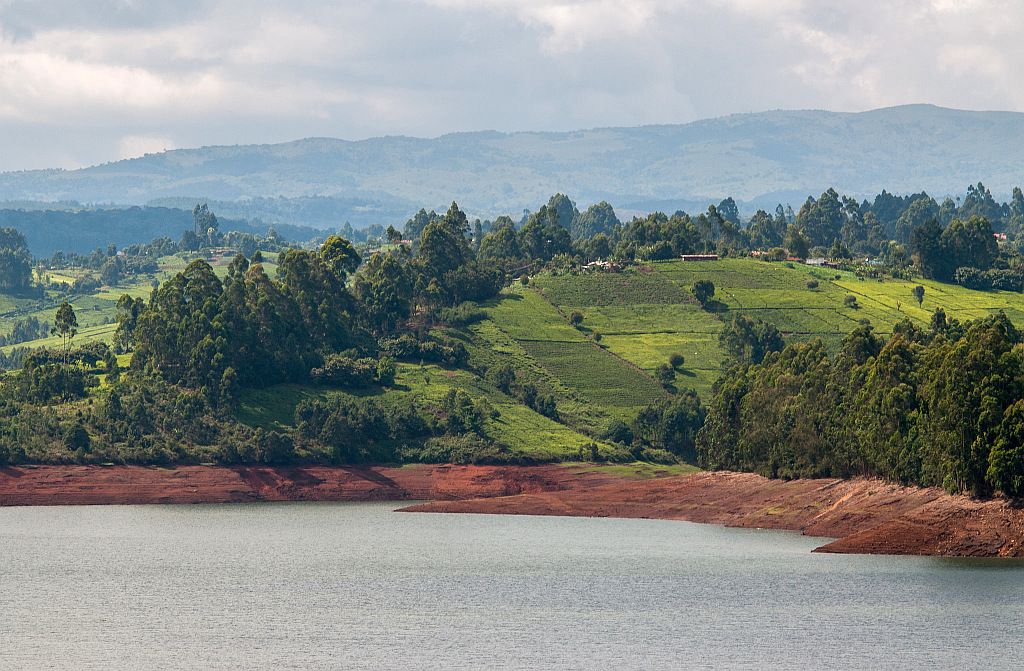For more inclusive water management in Kenya’s Tana River Basin

From severe water scarcity in Cape Town, South Africa, to devastating floods in the Indian state of Kerala, 2018 saw plenty of evidence that the world urgently needs better ways to cope with growing water challenges. Throughout the year, the International Water Management Institute (IWMI) and many of our partners argued the case for nature-based solutions, taking our cue from the “water for nature” theme of World Water Day in March. What remains to be seen is how we can translate the strong case into practical measures that enhance water management in developing countries.
A new study, based on quantitative research findings, represents an important step in the right direction. Titled Quantifying the Services of Natural and Built Infrastructure in the Context of Climate Change: The Case of the Tana River Basin, Kenya (IWMI Research Report 174), it shows how an analysis of benefits accruing from both natural and built infrastructure can be incorporated into water resource planning and investment.
Built infrastructure (e.g., dams and reservoirs) remains a key pillar of economic growth, figuring importantly in the development strategies and plans of many countries. But it also remains controversial because of the often huge capital costs as well as the environmental and social impacts. To help address these concerns, we must gain a better understanding of the benefits that societies reap from natural capital, such as wetlands and grasslands. We also need a better knowledge of how built and natural infrastructure interact with one another, and how this may change in the face of climate change.
Such knowledge is scarce, in contrast with the wealth of information available on the benefits of built infrastructure alone. Moreover, to assess natural capital across entire river basins is extremely difficult. In a pioneering effort to overcome the obstacles, a recently concluded project called WISE-UP to Climate has shown concretely how we can fill the knowledge gap. Led by the International Union for Conservation of Nature (IUCN), with support from the German government, the project brought together a half dozen national and international partners.
As explained in the new IWMI report, project researchers relied on an ecosystem services approach to quantify the interactions between built and natural infrastructure. These services range from the provision of food and water to flood control and recreation. Though largely taken for granted in the past, they have gained new recognition because of their key role in sustaining growth. Researchers considered ecosystem services in the upper and lower Tana River Basin to determine how the two types of infrastructure interact, with what benefits and for whom.
In the upper basin, they examined how better management of natural infrastructure (such as watersheds) can affect the performance of built infrastructure downstream. Several years ago, The Nature Conservancy (TNC) commissioned a study to determine the value of erosion-control practices for reducing sediment in reservoirs and thus enhancing hydropower generation and irrigation. On this basis, TNC created the Nairobi Water Fund (NWF) to provide a mechanism for investing in practices such as agroforestry and terracing on steep slopes. The new research confirmed results from the NWF study but also assessed the possible implications of climate change, finding that, regardless of the climate scenario, such investments should yield significant returns on investment.
In the lower basin, researchers switched the equation around, examining the impacts of built infrastructure upstream on ecosystem services derived from natural infrastructure downstream. These services consist of activities such as floodplain grazing and fisheries as well as riverbank gardening, which vary from year to year, depending on river flows. The results showed that, while dams have reduced the benefits from moderate flooding by about USD 9.5 million annually, they have provided rural people with better protection against severe floods.
Researchers estimated the revenues from built infrastructure at USD 298 million each year, with benefits accruing chiefly to urban enterprises and consumers. In contrast, the ecosystems services dependent on natural infrastructure downstream primarily benefit smallholder farmers and pastoralists, and have a cumulative value of about USD 152 million annually. Incorporating such information into water resource planning is not just a matter of comparing monetary values but should also depend on how the benefits are distributed, putting equity and social inclusion at the center of the debate.
The stakes are high, as water managers in Kenya come to grips with these issues. Supporting the livelihoods of some 6.5 million people, the Tana Basin is the main source of water for the nation’s capital, Nairobi. According to this and previous studies, climate change is expected to have major impacts on water resources in the basin – both good and bad. In a reversal of recent rainfall declines, the upper basin will likely see higher rainfall toward the end of this century. While providing more water for multiple uses, this will also mean more frequent and severe floods.
To address both the threats and opportunities requires an integrated approach, in which built and natural infrastructure are planned and managed in tandem. With this in mind, the project facilitated an “action learning” process aimed at matching the evidence from project research with the perspectives and realities of key decision-makers and stakeholders.
Read the report
McCartney, M.; Foudi, S.; Muthuwatta, L.; Sood, A.; Simons, G.; Hunink, J.; Vercruysse, K.; Omuombo, C. 2019. Quantifying the services of natural and built infrastructure in the context of climate change: the case of the Tana River Basin, Kenya. Colombo, Sri Lanka: International Water Management Institute (IWMI). 61p. (IWMI Research Report 174). [doi: 10.5337/2019.200]

